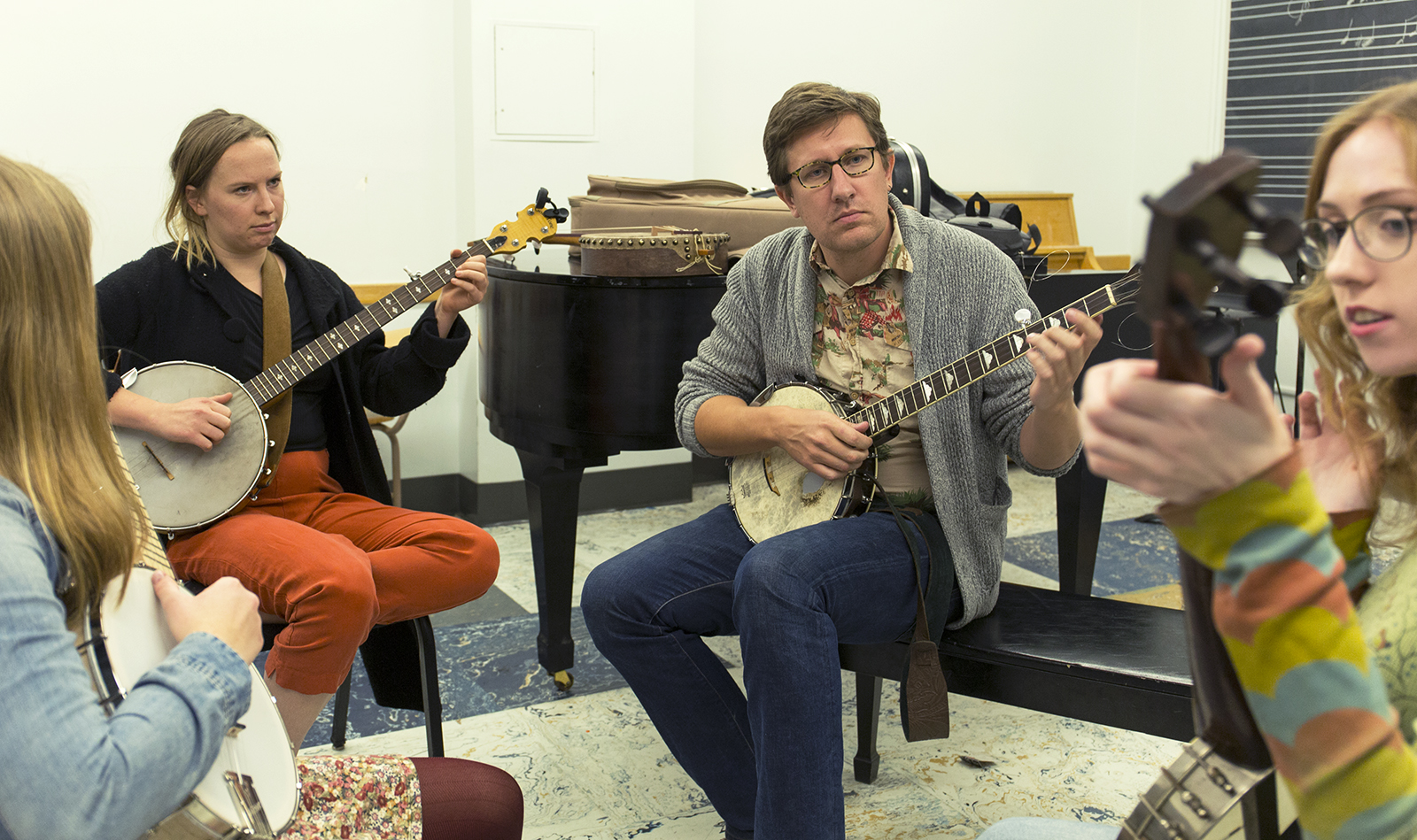Sounds of Schoenberg: The banjo

Ethnomusicology graduate student Scott Linford (middle) plays the banjo in a fusion group called Skin and Strings. He researches the instrument and its ancestor, a West African folk lute called the ekonting.
(Jiahui Zhou/Daily Bruin)
By Daily Bruin Staff
Nov. 20, 2015 12:20 a.m.
Each week, Daily Bruin A&E will explore the instruments of the World Musical Instrument Collection and their performers that all contribute to the musical landscape of the UCLA Herb Alpert School of Music. This week, we highlight the banjo, a stringed instrument that is a mainstay in American folk music.
Scott Linford sat in a circle with three students, all with banjos in hand. As the teacher of the group, Linford demonstrated a musical phrasing, his fingers rapidly plucking the rhythm the students had to follow.
The sound, interspersed with casual banter between teacher and student, rollicked through the room as the intimate circle of performers jammed together. While the tunes are reminiscent of American blues and folk, Linford said his goal as a teacher is to reveal the rich cultural history behind the banjo through music and research.
As an ethnomusicology graduate student at UCLA, Linford explores the banjo through a fusion group called Skin and Strings, in which he performs accompanied by musicians on the Swedish nyckelharpa and the Indian tabla.
The banjo has taken Linford on a journey to research the instrument and its ancestor, a West African folk lute called the ekonting.
Linford’s travels in West Africa have given him insight into how West African slaves in early America created the banjo based on instruments in their native land.
As he researched the history behind the banjo and its origins, Linford said he aimed to dispel the stereotype that the banjo is exclusively associated with white populations from the rural South. Linford said, in America, the instrument became a symbolic prop associated with blackface minstrelsy, while in West Africa, slaves constructed and played the banjo recreationally.
After it was introduced to a wider American audience, the banjo led to the development of music genres like folk and blues.
Linford’s goal in discussing the cross-cultural history of the banjo is to bring to light a musical tradition that originated from across the Atlantic Ocean despite its typical association with the United States.
“Every time I pick up the banjo, I end up educating people about it,” Linford said. “I love its story and teaching people the history really enriches how people view the instrument.”
Compiled by Tridib Biswas, A&E contributor.


